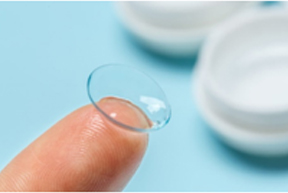

We have covered the astounding pace of developments in Cell and Gene therapies (CGT) and gene editing over several newsletters now. Multiple approvals, global pipeline and commercial launches are encouraging. This month’s developments signify next generation therapies becoming more mainstream than ever before.
We are highly excited about Ferring Pharma and Blackstone’s joint venture announcement this month. The new company FerGene, will receive an investment of $400 million from Blackstone Life Sciences and up to $170 million from Ferring Pharmaceuticals. The treatment will be for patients with an aggressive form of the disease whose current options include surgical removal of the bladder (high-grade, Bacillus Calmette-Guérin (BCG) unresponsive, non-muscle invasive bladder cancer (NMIBC)). The FDA has accepted the BLA for priority review, granted the therapy a breakthrough designation; and itand is expected to be introduced in the US market next year.With a the largest mainstream private equity investor in the world formally participating in the emerign opportunity of cell and gene therapies and gene editing, next generation therapies are here to stay. This development is an emphatic ratification of the commercial opportunity in an area where scientific and clinical potential have been widely appreciated. While reimbursement models are still evolving, there is confidence on clinical merit and commercial uptake; and expanding appreciate ofmainstream investors will now fuel scale-up to the next orbit.
This month also saw a significant enabling development in the area of manufacturing. Manufacturing scale-up has been a critical impediment in advancing these process intensive therapies for lab to clinic. Genesis of most therapies currently being advanced has been in global academia and research labs. However, for delivering solutions at scale, commercial manufacturing will need to be strengthened a the core and powered by greater level of innovation. A motivating development to thisend is the announcement of a partnership between Harvard, MIT, G.E Healthcare, FujifilmDiosynth,MillioporeSigma and five of the region’s research hospitals to build a new $50 million center for developing new genetic and cell therapies. The new center will work on breakthroughs in immunotherapy, cell therapy, gene editing and will manufacture new experimental therapies on site for use in clinical trials. This is a one of its kind model for CGT manufacturing, pooling in resources and expertise from multiple stakeholders to address the glaring gap in the translation and expansion of biological therapies. With regards to CGTs more pressing is the need of sophisticated laboratories and equipment to scale manufacturing processes to required quantities while also meeting the stringent regulatory requirements. Cross-stakeholder Public-Private Partnership models of this kind will prevent new translational research from being shelved due to lack of facilities required to move it to clinical stage. With such strong acceleration levers, we are glad to near 2019’s end on a exuberant note and a future with great promise.

PCSK9 inhibitors have been the new war horses in the cholesterol battle. While the overall market size of PCSK9 inhibitors haven’t met the lofty expectations prior to launch, Amgen and Sanofi-Regeneron have been actively vying for a share of the expanding market. Earlier this year, this triggered a notable price war with Amgen slashing its drug Repatha’s US list price from $14.5k to $5.8k and Sanofi responding with a matching price for its drug Praluent.
With the latest acquisition announcement, Novartis has emerged as the new contender inthis asset class. Confirming speculationsthat were rifethrough the month, Novartis finally announced its acquisition of The Medicines Company for $9.7 billion, strengthening its cardiac drug portfolio. The Medicine Company’s PCSK9 drug Inclisiran, a cholesterol lowering injection, is the most advanced pipeline drug in this class and has reported positive results in phase 2 & 3 clinical trials. It will require twice-yearly injections, giving a strong competition to the 26-injection regimens of Repatha and Praluent.
Another billion dollar announcement was Roche’s acquisition of Promedior. The $1.4 billion transaction will strength Roche’s presence in the niche space of anti-fibrotic drugs. Promedior’smain drug candidate against the lung disease Idiopathic Pulmonary Fibrosis (IPF) is set to begin late-stage trials and reported positive phase-2 results. Roche already has a hot-selling IPF medicine, Esbriet and this acquisition would make it a leader in IPF, a therapeutic area several biopharma companies have historically faced failures in.
To top these, the big BMS- Celgene transaction was closed this month. The $74 billion transaction is one of the largest biopharma deals ever. The merger, which was initially announced in early 2019, but has now finally closed with Celgene divesting its psoriasis drug Otezla(apremilast) to Amgen for (for $13.5 billion) at the FTC’s behest.
Beyond mega-mergers, the month was also an active one for strategic partnerships. A note one is Bayer’s$50 million investment in eGenesis, a biotechnology company utilizing CRISPR technology for the development of effective human-compatible organs. The investment was led through Leaps by Bayer, a unit of Bayer investing into breakthrough technologies addressing global challenges in health and agriculture. With this continued level of momentum, we expect calendar year 2019 to close with a record high of biotech and pharma M&A.

As personalized medicine continues to rapidly expand in application potential, newer areas such as the custom implants are gaining traction. Customized 3D printed implants is currently a niche segment and has historically been constrained by substantially higher price of the custom implants and limited corporate interest. This latter has been rapidly changing and multiple companies expanding interest in 3d printed implants over the last few years. In 2016, Smith & Nephew introduced its first 3D-printed titanium hip implant,the REDAPT Acetabular Fully Porous Cup with CONCELOC Technology. In 2018, Stryker launched their first 3D-printed hip implant, the Trident II Acetabular System. In 2017, DePuySynthes acquired 3D-printing technology from Tissue Regeneration Systems. Additionally, customized instrumentation has also been a trend with high momentum and corporate interest.
Massachusetts based Conformis has been a pioneer in this segment. Conformisdeveloped an enviable portfolio of customized 3D printed implants based on its proprietary iFit Image-to-Implant technology platform to develop, manufacture, and sell patient-specific arthroplasty joint replacement implants. In our October Newsletter we covered Stryker’s $30 million deal with Conformis to develop and commercialize customized knee arthroplasty instruments.
Conformisis rapidly scaling its portfolio and the latest addition in their portfolio is ConformisiTotal Hip Replacement System. Conformis announced FDA clearance and full commercial launch of the product that had a limited launch last year. The design process for the hip replacement system is similar to the currently commercial knee replacement; and usesimaging and design software for a pre-operative surgical plan, disposable instruments and 3d printed implants that are all patient specific. The patient-specific system will help to overcome dislocation and discrepancies in leg length, which are current challenges and risks of hip replacement surgery. While custom implants still remain niche in a largely commoditized joint replacement market, expanded corporate interest, price competitiveness and greater clinical data support on benefits could drive wider adoption in the future.

Myopia, a condition that causes light rays to focus at a point in front of the retina rather than directly on the surface due to the elongation of the eye is one of the most frequent cause of childhood correctable vision impairment across the world.Apart from the everyday hindrances in a child’s abilities, the progression of myopia has been linked to sight-threatening conditions later in life, such as cataracts, retinal detachment, and glaucoma.
CooperVision, Inc., a global major in contact lenses has developed the first soft, single use, disposable lens designed to slow the progression of myopia in children between 8 and 12 years old. The US FDA approved these contact lenses this month after the safety and effectiveness of MiSight was studied in a three-year randomized, controlled clinical trial of 135 children ages 8 to 12 at the start of treatment who used MiSight or a conventional soft contact lens.In the clinical trial, CooperVision demonstrated a 59% slower disease progression compared to the control group. The lenses will be launched in US in March 2020 as part of a CooperVision myopia management initiative. The lenses are already marketed in Canada, the U.K., Spain and Australia, though age ranges for initial fitting may vary.
These FDA approved MiSight contact lenses finally put myopia under the control management spotlight and have brought the issue into the mainstream amongst clinicians and consumers alike. Devices such as these are expected to have a ‘halo effect’ and lead to an increasing demand for preventive care devices. As AI & ML expands our understanding of disease incidence and progression, we perceive potential for such preventive care devices expanding manifold.
Another notable development seen this year in the ophthalmology devices landscape is the unveiling of phase 3 trial data by Johnson & Johnson Vision from the clinical study of its anti-histamine releasing contact lenses to reduce itchiness after allergy exposure. The study results were positive with a reduced itching sensation and redness 15 minutes after administration of the lenses. These lenses further validate the effectiveness of the contact lens delivery system in treating various conditions. Both are exciting developments around novel drug delivery systems being explored in ophthalmic care and preventive care breaching the world of devices. These innovation trends will have great significance for pipeline development and will be intrinsic to competitiveness.

This month has seen a prominent step forward in the digital health world as US FDA issues a draft guidance for drug master files (DMFs) for electronics and software components of combination products that perform functions such as drug delivery, providing information useful for make decisions in treatment, interface with other systems or devices and controlling features of the user interface. The guidance further covers administrative aspects of submitting and reviewing DMFs and also addresses the general content expectations for type V DMFs.
This Type V DMF can be used to provide confidential information to the FDA about combination products that contain device elements that may be used in multiple other devices.It would also work as an express pathway for reporting any technology advancements in the device in the future and allow the FDA to review the notified modifications. This completed scientific review of a product through the Type V pathway by the FDA, would facilitate the review process of other CDER applications that incorporate and reference this DMF.
With the ever expanding share of drug device combination products in both new drug approvals and generics, this is a critical development. Greater clarity on filing DMFs for the device component will make it easier for device developers to work with multiple pharma companies on new device possibilities and easier for pharma companies or adopt or switch to new delivery devices for combination products. It will thus reduce impediments and create agility in development of biopharma products (especially generics and biosimilars) with complex delivery devices. Overall, we anticipate that this will greatly contribute to the evolution of the combination product packaging ecosystem, much needed in the current landscape.

-
- Sathguru’s healthcare practice lead Pushpa Vijaraghavan discusses regulatory updates and barriers to innovation in Pharma Packaging on the panel at InnoPackTheatre at CPhIIndia.
- Sathguru’s healthcare practice lead Pushpa Vijaraghavan on a panel discussing íntellectual Property’ at GlobalBioIndia earlier this month.
- Pushpa Vijayaraghavan moderating at session on ‘Shifting Focus on Complex Formulations and Portfolio Diversification of Generics Beyond Vanilla Oral Solids’ at CPhI Conferences.
Sathguru Highlights
-
-
- CSR Wing Of Sathguru Management Consultants To Support Children With Cancer & Thalassemia Click here
- Workshop on Indian Pharma Market Opportunities at PharmaPack, Europe
-
Connect with us at lifesciences@sathguru.com to learn more.
 Grow Beyond
Grow Beyond 

